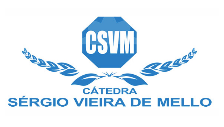Is there a latin american child migration law? An analysis of the ‘Advisory Opinion n. 21 on the rights of child migrants’ rendered by the Inter-American Court of Human Rights
DOI:
https://doi.org/10.30612/videre.v11i21.9795Keywords:
Migration. Children. Inter-American Court of human Rights. Advisory Opinion no. 21/14.Abstract
In 2014, in response to the request of the Southern Cone countries, the Inter-American Court of Human Rights issued an Advisory Opinion on the rights of migrant children in an attempt to emphasize the minimum guarantees that the countries of the region should grant to this category of migrant, especially considering their hypervulnerability when compared to adult migrants. Such request, made in the light of the growing migratory flow of unaccompanied minors in the Americas, has led the Court to point to a number of rights that should be particularly guaranteed, such as the right to seek and receive asylum, non-criminalization, non-detention, and non-return of minors, culminating in the design of what can be considered as a Latin-American Child Migration Law, being it why the present research is deemed relevant, as it emphasizes what would be the bases of this Law. For that matter, a descriptive and exploratory research was conducted, parting from an inductive method through a detailed study of the Advisory Opinion no. 21/14, and, thus, primarily using the documental technique, chosen qualitatively.Downloads
References
ARNOLD, Amanda. Family separation policy: What to know about the detention centers for immigrant children along the U.S.–Mexico Border. Published on Jun. 21 2018. Available at: https://www.thecut.com/2018/06/immigrant-children-detention-center-separated-parents.html. Accessed on: Jan. 15, 2019.
ARRIAGA, Felicia. Understanding Crimmigration: Implications for Racial and Ethnic Minorities Within the United States. Sociology Compass, v. 10, n. 9, pp. 805-812, 2016.
BBC. US child migrants: 2,000 separated from families in six weeks. Published on Jun. 15 2018. Available at: https://www.bbc.com/news/world-us-canada-44503318. Accessed on: Jan. 15, 2019.
BURKE-WHITE, William W. A community of courts: toward a system of international criminal law enforcement. Michigan international Law Journal, v. 21, n. 1, pp. 1-103, 2002.
DEMBOUR, Marie-Benedicte. When Humans Become Migrants. Oxford: Oxford University Press, 2015.
GROSFOGUEL, Ramón. Colonial difference, geopolitics of knowledge, and global coloniality in the modern/colonial capitalist world-system. Review (Fernand Braudel Center), v. 25, n. 3, pp. 203-224, 2002.
IACHR. Advisory Opinion OC-21/14. Published on Aug. 19 2014. Available at: www.corteidh.or.cr/docs/opiniones/serie a_21_eng.pdf. Accessed on: Jan. 15, 2019.
IACmHR. Human rights situation of refugee and migrant families and unaccompanied children in the United States of America.
OAS/Ser.L/V/II.155 – Doc. 16. Published on Jul. 24 2015. Available at: https://www.oas.org/en/iachr/reports/pdfs/refugees-migrants-us.docx. Accessed on: Jan. 15, 2019.
OAS. American Delcaration of Human Rights. 1948. Available at: https://www.cidh.oas.org/basicos/portugues/b.Declaracao_Americana.htm. Accessed on: jan. 15 2019.
OAS. American Convention of Human Rights. 1969. Available inat https://www.cidh.oas.org/basicos/portugues/c.convencao_americana.htm. Accessed on: jan. 15 2019.
OAS. Cartagena Declaration on Refugees, Colloquium on the International Protection of Refugees in Central America, Mexico and Panama. 1984. Available at: https://www.oas.org/dil/1984_cartagena_declaration_on_refugees.pdf. Accessed on: jan. 15 2019.
ROSENBLUM, Marc R. Unaccompanied Child Migration to the United States: The Tension between Protection and Prevention. Published on Apr. 2015. Available at: https://www.migrationpolicy.org/research/unaccompanied-child-migration-united-states-tension-between-protection-and-prevention. Accessed on: jan. 15 2019.
SHINKMAN, Paul D. Comparing the Policies and Practices of Detaining Children. Published on Jun. 15 2018. Available at: https://www.usnews.com/news/best-countries/articles/2018-06-25/how-other-countries-treatment-of-detained-migrant-children-compare-to-the-us. Accessed on: jan. 15 2019.
SLAUGHTER, Anne-Marie. A new world order. Princeton/NJ: Princeton University Press, 2004.
SQUEFF, Tatiana de A. F. R. Cardoso ; ROSA, Marina de A . Jus Cogens: an european concept? An emancipatory coneptual review from the Inter-American System of Human Rights. Revista de Direito Internacional, v. 15, n. 1, pp. 124-138, 2018.
STUMPF, Juliet. The The Crimmigration Crisis: Immigrants, Crime, and Sovereign Power. American University Law Review, v. 56, n. 2, pp. 367-419, 2006.
UN. 1951 Geneva Convention relating to the Status of Refugees. Recueil des Traités, v. 189, pp. 137-222, 1954.
UN. 1969 Vienna Convention on the Law of Treaties. Recueil des Traités, v. 1155, pp. 331-512, 1980.
UN. 1989 Convention on the Rights of the Child. Recueil des Traités, v. 2230, pp. 293-296, 2004.
Downloads
Published
How to Cite
Issue
Section
License
Authors must accept the publication rules when submitting the journal, as well as agree to the following terms:
(a) The Editorial Board reserves the right to make changes to the Portuguese language in the originals to maintain the cultured standard of the language, while respecting the style of the authors.
(b) Authors retain the copyright and grant the journal the right to first publication, with the work simultaneously licensed under the Attribution-NonCommercial-ShareAlike 3.0 Brazil (CC BY-NC-SA 3.0 BR) that allows: Share - copy and redistribute the material in any medium or format and Adapt - remix, transform, and create from the material. CC BY-NC-SA 3.0 BR considers the following terms:
- Attribution - You must give the appropriate credit, provide a link to the license and indicate whether changes have been made. You must do so under any reasonable circumstances, but in no way that would suggest that the licensor supports you or your use.
- NonCommercial - You may not use the material for commercial purposes.
- Sharing - If you remix, transform, or create from material, you must distribute your contributions under the same license as the original.
- No additional restrictions - You may not apply legal terms or technological measures that legally restrict others from doing anything that the license permits.
(c) After publication, authors are allowed and encouraged to publish and distribute their work online - in institutional repositories, personal page, social network or other scientific dissemination sites, as long as the publication is not for commercial purposes.



















